What Is Data Source Filter In Tableau
Introduction
Howdy and welcome to the first instalment of this new series on improving dashboard performance inspired by Emanuele Farotti's dandy class. I am starting off this serial with a well-known operation killer: filters. Hopefully, this blog postal service will take something for anybody to take abroad from it.
There are multiple ways to enact a filter in Tableau and I will merely demonstrate one method for each.
6 Different Filters in Tableau
In tableau there are 6 unlike types of filters:
1. Extract filters
2. Datasource filters
3. Context filters
4. Dimension filters
five. Measure filters
*6. Table adding filters
"Table adding filters" are the only filters included on this list which are not "truthful" filters. Tabular array calculations perform on top of the view and therefore cannot filter annihilation (this would be circular logic). Data is not filtered out anywhere but rather it is hidden in the view. Tabular array calculations filters can, be taxing on performance every bit they still let all records into the view. If possible, another filter should be swapped for a tabular array calculation filter.
To create a table calculation filter (create a table adding and drag onto the Filters shelf):
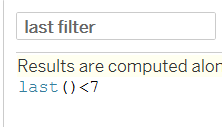
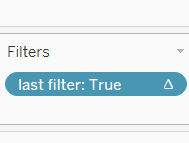
The club given at the start for the filters is also the society Tableau enacts each one. Information technology thus goes to stand that extract filters are the most performant filters every bit they stop data from entering the excerpt at all. Data source filters are also extremely performant as they impact the query sent to the database to bring the data into Tableau. This means less data is brought into Tableau.
To create an extract filter (in the data source pane click Edit):
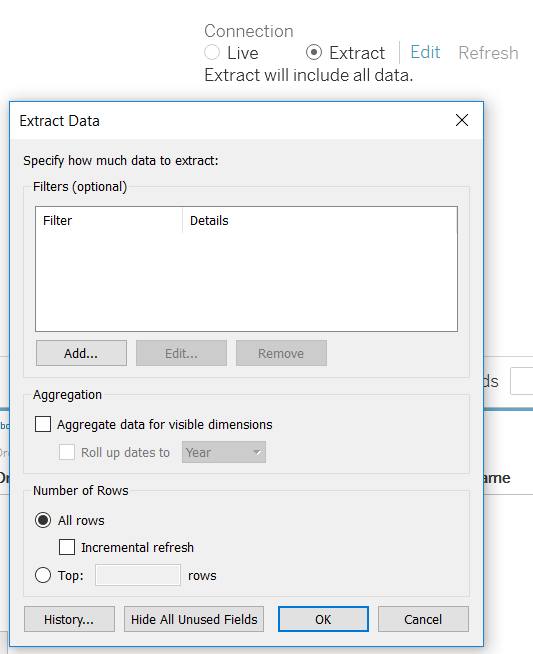
To create a data source filter (in the data source pane click Add):
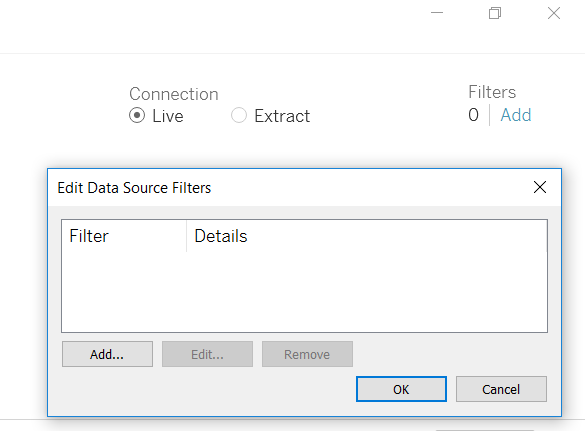
Context filters, when overused/misused, tin exist amongst the worst for performance. Context filters are filters practical after the information has come into Tableau and generate a temporary tabular array from which all subsequent filters would exist applied to. Context filters can really meliorate functioning if they cut down the data past over one-half and are not changed besides often i.e. a country filter. There are also cases, such as creating a peak x, where a context filter maybe be necessary.
To create a context filter (right click a filter):
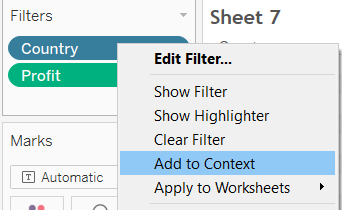
Dimension filters, whilst non every bit taxing as a context filter, are still less performant than mensurate filters. Dimension filters should be replaced with data source/extract filters if the value is never changed, i.e. yous are always only interested in the "United States".
SQL query example:
WHERE States IN ('United States', 'UK')
Measure filters (unaggregated) may be less performant that information source and extract filters merely they are faster than any other remaining filters. This is down to the fact that the comparison the query argument makes for a numeric field computes faster than for a cord/dimension.
SQL query instance:
WHERE Sales Between 0 AND 100
Aggregated mensurate filters, however, are not as expert for performance because backside the scenes Tableau is having to group by fields/dimensions, recollect the aggregated value and so compute the filter. In SQL terms this is the deviation between using the WHERE and the HAVING keywords. WHERE tin can be used for row level filtering, HAVING is used for the aggregate filtering and is fundamentally slower.
SQL query example:
GROUP BY States
HAVING SUM(Profit)>0
To create a dimension filter (elevate dimension onto Filters shelf):
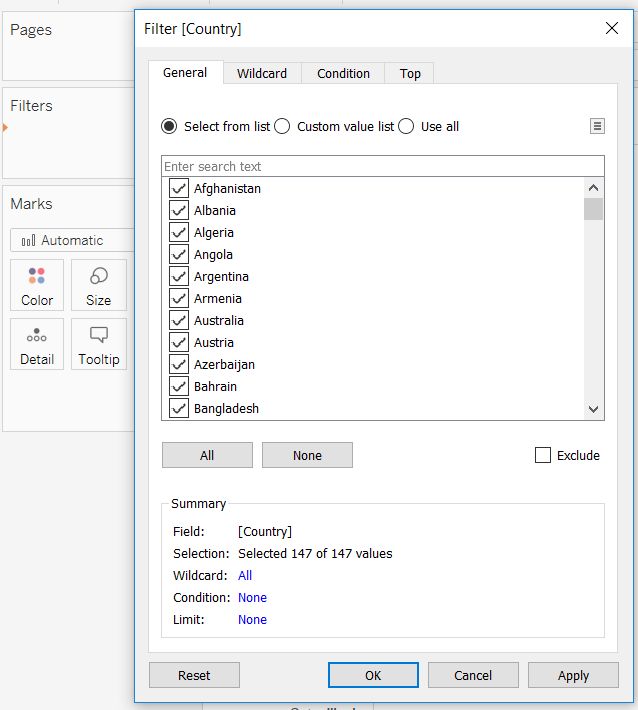
To create a measure filter (drag measure out onto Filters shelf):
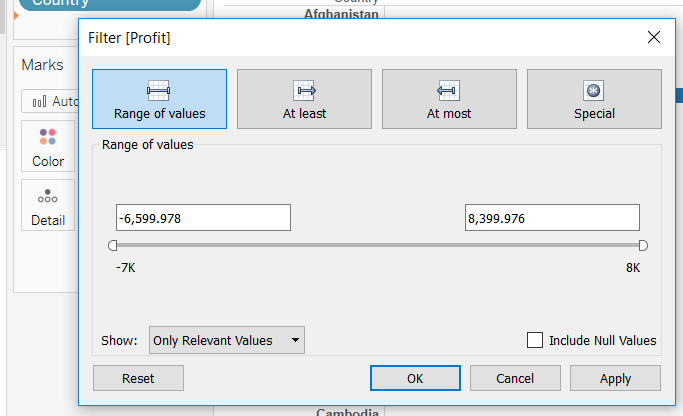
Date fields – Both a Dimension and a Measure
Engagement fields can be filtered as either a dimension or measure out filter. If the engagement field on filter is prepare to a detached option (bluish) and then the filter is treated every bit a dimension filter. If date field on filter is set to continuous (green) then the filter is treated as a measure filter. As same, information technology is more performant to utilise a measure out filter so continuous (measure out) appointment filters are preferable to using discrete (dimension) date filters. Another method to ameliorate performance would be to filter the date would be to create a custom appointment field and extract the information so this field manifests in the extract. This would likewise be extremely performant equally a filter.
Filter Options and Settings to Amend Functioning
Endeavor to use the "Only Relevant Values" setting sparingly as this requires a new query whenever any other filters are applied (to go the new list of values). Utilising action filters in the correct manner on a dashboard is a slap-up style to get the same functionality of a filter with better operation times.
Post-obit on from actions, use the hover action sparingly, every bit this is querying every hover action.
Attempt to utilise the "Testify Utilise Button" setting to prevent individual queries on multi-selection.
Filtering on a condition is also taxing on the operation. This is a case where either a measure out filter should replace this filter or a field should be made and materialised in the extract to improve functioning. Amass measure filters volition besides be worse on performance than a simple measure filter (since it must evaluate the aggregation first then filter).
Final Words
I hope you are able to solve some of your performance issues using the above cognition. If non, hang tight for the next instalment in improving dashboard performance.
What Is Data Source Filter In Tableau,
Source: https://www.thedataschool.co.uk/mina-ozgen/improving-tableau-performance-series-1-filters
Posted by: williamsundis1972.blogspot.com


0 Response to "What Is Data Source Filter In Tableau"
Post a Comment